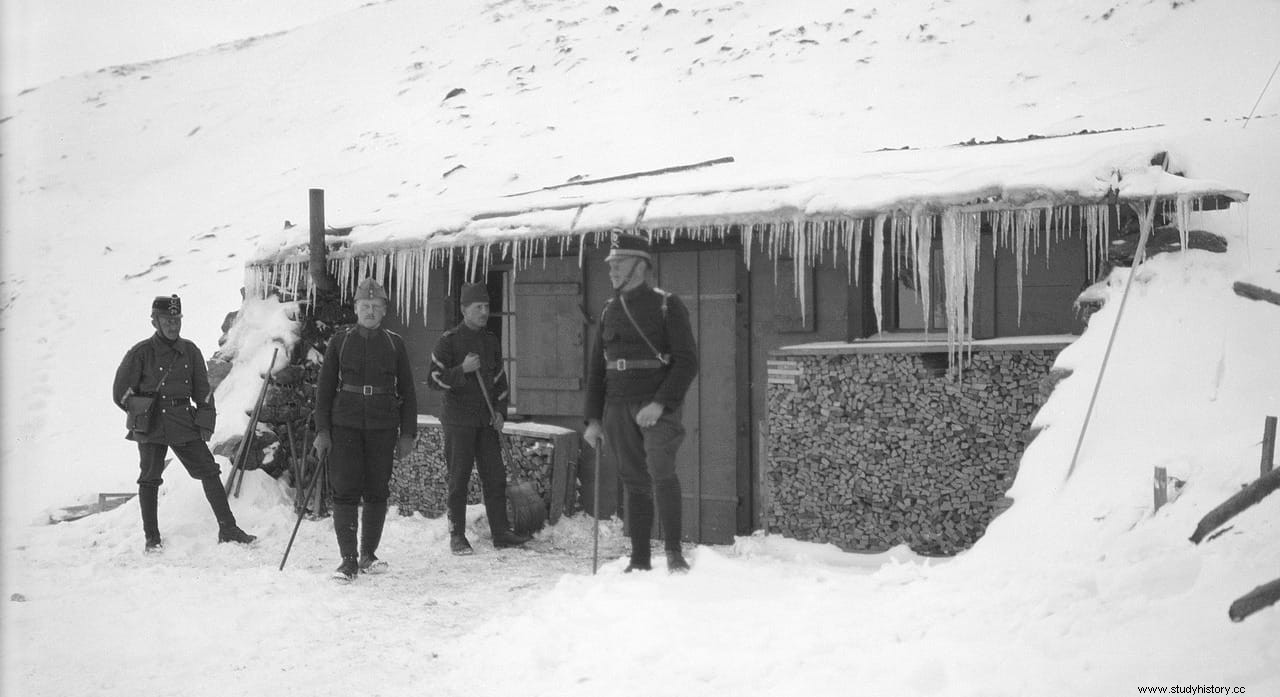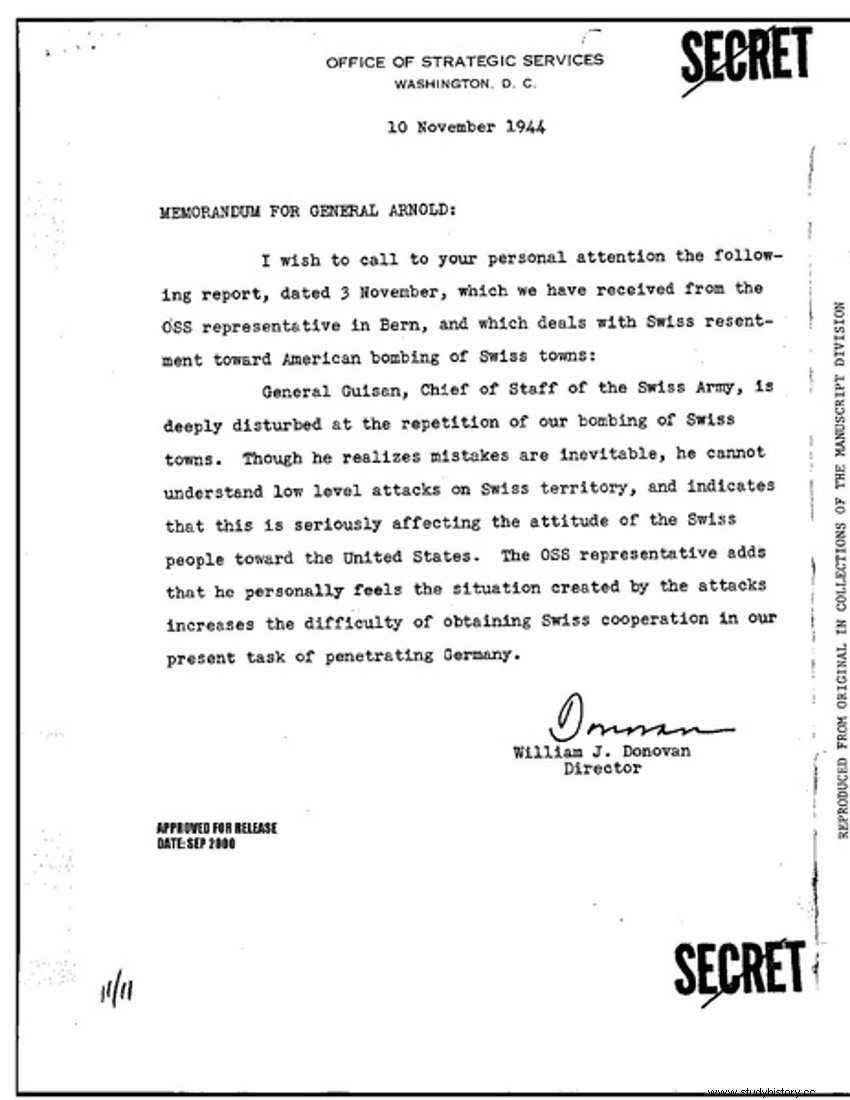What trait did countries like Spain, Belgium, Holland, Sweden, Denmark, Norway, Ireland or Switzerland have in common during World War II? The fact of being neutral in the conflict, regardless of their political sympathies for one side or the other.
However, declared neutrality is not always enough to keep one safe when strategic needs prevail and some of those mentioned experienced it on their own soil, being invaded by Germany:Belgium, the Netherlands, Denmark, Norway... Even Switzerland, generally considered the paradigm of that category, had to experience warlike episodes within its borders, both by air and by land.
Switzerland had adopted a position of official neutrality in 1815, although it had already been moving in that direction since the 17th century. Until this century, the thirteen cantons that had managed to separate from the Holy Roman Empire in 1499 and formed the Eidgenossenschaft o Old Confederacy were independent of each other; but its military strength, once a reference from which European armies fed, had declined with the rise of the great national states of the continent.

In 1798 the Helvetic Confederation resulting from the Peace of Westphalia a century and a half before was occupied by the French revolutionary army, which imposed an artificial Helvetic Republic; so unpopular that there was a strong resistance movement throughout the region that would force Napoleon to grant extensive autonomy.
After the final fall of the Emperor in 1815, the Congress of Vienna restored to the Swiss their independence and some territories seized (the cantons of Valais, Neuchâtel and Geneva) while all the powers recognized their desire to be considered neutral, as they had expressed two years earlier following the French defeat at Leipzig. The origin of Swiss neutrality has already been specifically dealt with in an article.
Throughout the 19th century -and despite some ups and downs-, Switzerland was outlined in the eyes of the world as a neutral country by autonomy, thus accepting it by all its neighbors to the point that various international organizations of reference such as the Red Cross (1854), the International Telegraphic Union (1868) or the Universal Postal Union (1874). Geneva was also chosen for the conference that produced the convention for assistance to the war-wounded.
In this way the 20th century arrived and with it the two great war conflicts that marked it in its first half. True to its status, Switzerland remained neutral in the First World War, although this not only did not imply demilitarization, but its national army had to be deployed on the borders to guarantee that condition:a quarter of a million men were mobilized, a number that left progressively reducing over the following years as respect for the country's territorial integrity was verified.

This did not prevent a temporary increase caused by a critical moment at the end of 1916, when the rumor spread that France was preparing to attack Germany via Switzerland, something that ultimately did not happen. In any case, it is estimated that there were nearly a thousand actions that, in one way or another, crossed the Swiss borders, especially in mountain passes and areas where the boundaries between various belligerents converged.
When peace came, Switzerland became a refuge for political exiles to the same extent that illustrious artists promoted some avant-garde movements from there and the most important cities were the scene of international espionage. Then political extremism began to sharpen on the continent and the winds of war blew again. These were confirmed in September 1939 with the German invasion of Poland and the subsequent response from France and Great Britain.
Switzerland again mobilized its people, gathering half a million soldiers and militiamen to secure its borders, fearing the possibility of being occupied by the Wehrmacht as well. In fact, the Germans had a plan in this regard, the Operation Tannenbaum , but it was never carried out because it was considered unnecessary (Switzerland was not a danger), apart from the fact that a good part of the Swiss were Germanophiles.

However, as in the previous war, there were several incidents and clashes involving border violations. The geostrategic location of the country at that time must be taken into account:a small island in the middle of the Alps surrounded by the territory of the Axis powers (Austria, Italy, occupied France, Germany itself) whose airspace no one was willing to enter. give up; a navigational error could always be claimed and, in any case, Swiss aviation was not exactly his strong point.
Thus, the Swiss airspace was desecrated again and again by the air forces of both sides. First, the Luftwaffe planes flew over Switzerland during the invasion of France, registering nearly two hundred cases, of which eleven ended up being shot down by the local Air Force; The irony was that Messerschmidt Bf-109s purchased from Germany were used for this, which filed a formal protest.

Given Hitler's threats, the Swiss changed tactics and forced intruding pilots to land on their airfields. Therefore, its soil was often used for forced or emergency landings, but not only by German aviators:hundreds of Allied crews ended the war held in those mountains, something always preferable to being interned in a Teutonic concentration camp.
However, not all incidents were so clean. In 1940 the RAF attacked Geneva, Renens, Basel and Zurich before realizing the error. In the fall of 1943 it was the Americans who erred and dropped their bombs on the town of Samedan, as they would the following year on other places like Koblenz, Cornol, Niederweningen and Thayngen. There would also be actions in 1945 in Chiasso, Stein am Rhein, Taegerwilen, Vals, Rafz and Brusio, the latter on April 16, 1945, putting an end to those incidents that, fortunately, caused no casualties.
Now, with this continuous repetition of errors, it was a matter of time before tragedy struck. It did so on April 1, 1944, when an American squadron bombed the city of Schaffhaussen by confusion, causing the death of forty people and destroying its manufacturing fabric; In March of the following year, those affected were Basel, where incendiary bombs fell, and Zurich, in which five citizens died after being confused with Freiburg (a court-martial presided over by the famous actor James Stewart, who was a captain, prosecuted and finally acquitted responsible crew).
In the US, some of its military believed that the Swiss deserved the bombings for sympathizing with the Nazis, although the government chose to apologize and compensate Switzerland with a flood of millions of dollars that was paid from 1944 to 1949. The Alpine country admitted the explanations but, at the same time, it was willing not to consent to any more, warning that in the future it would intervene against any plane that invaded its airspace without permission and would retain its crew.
